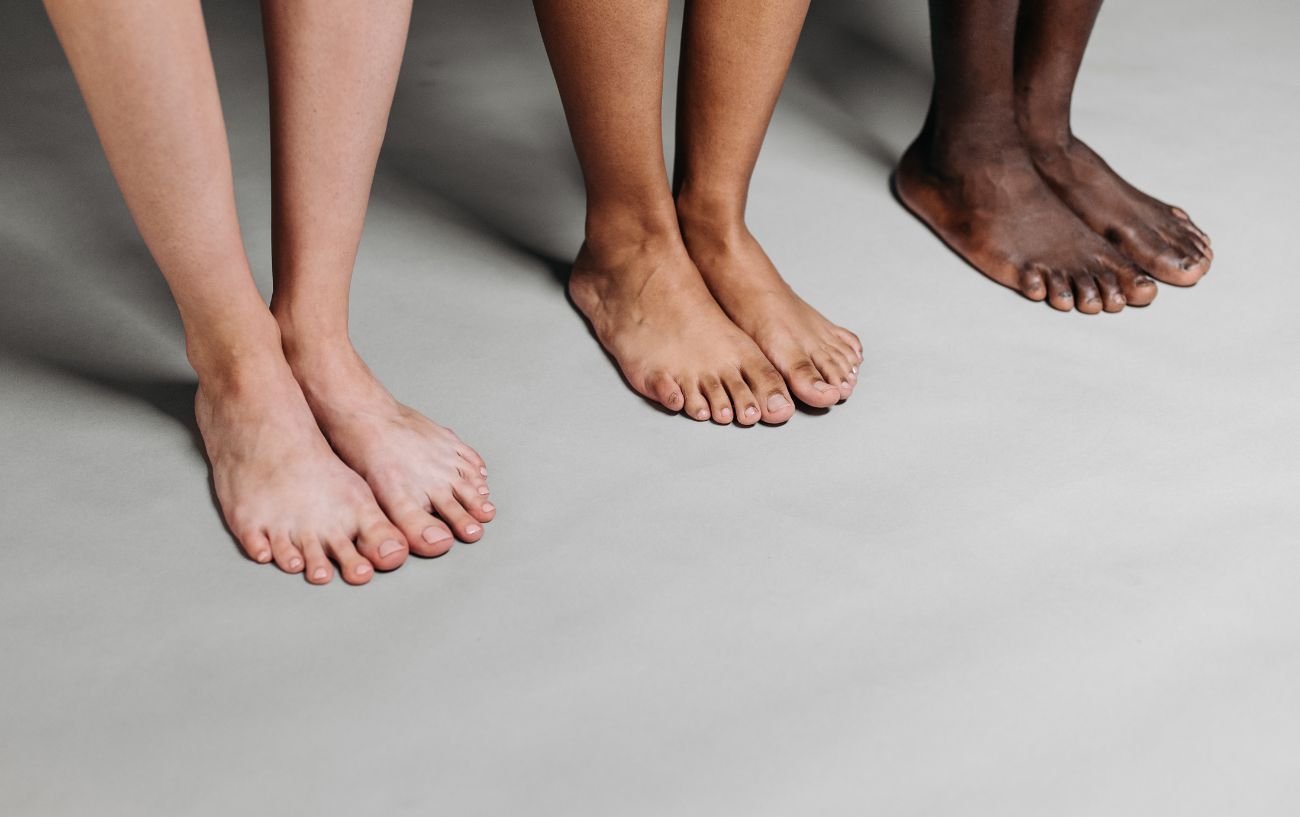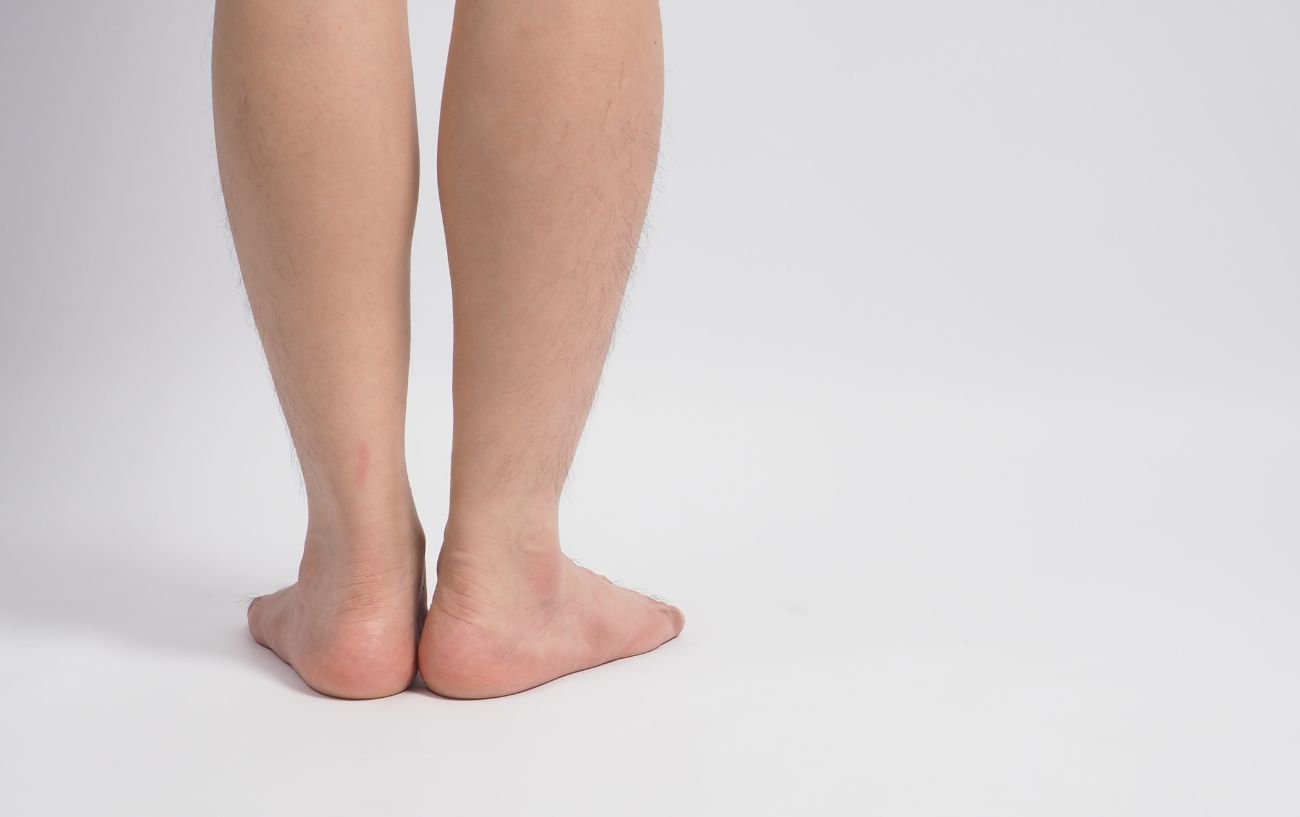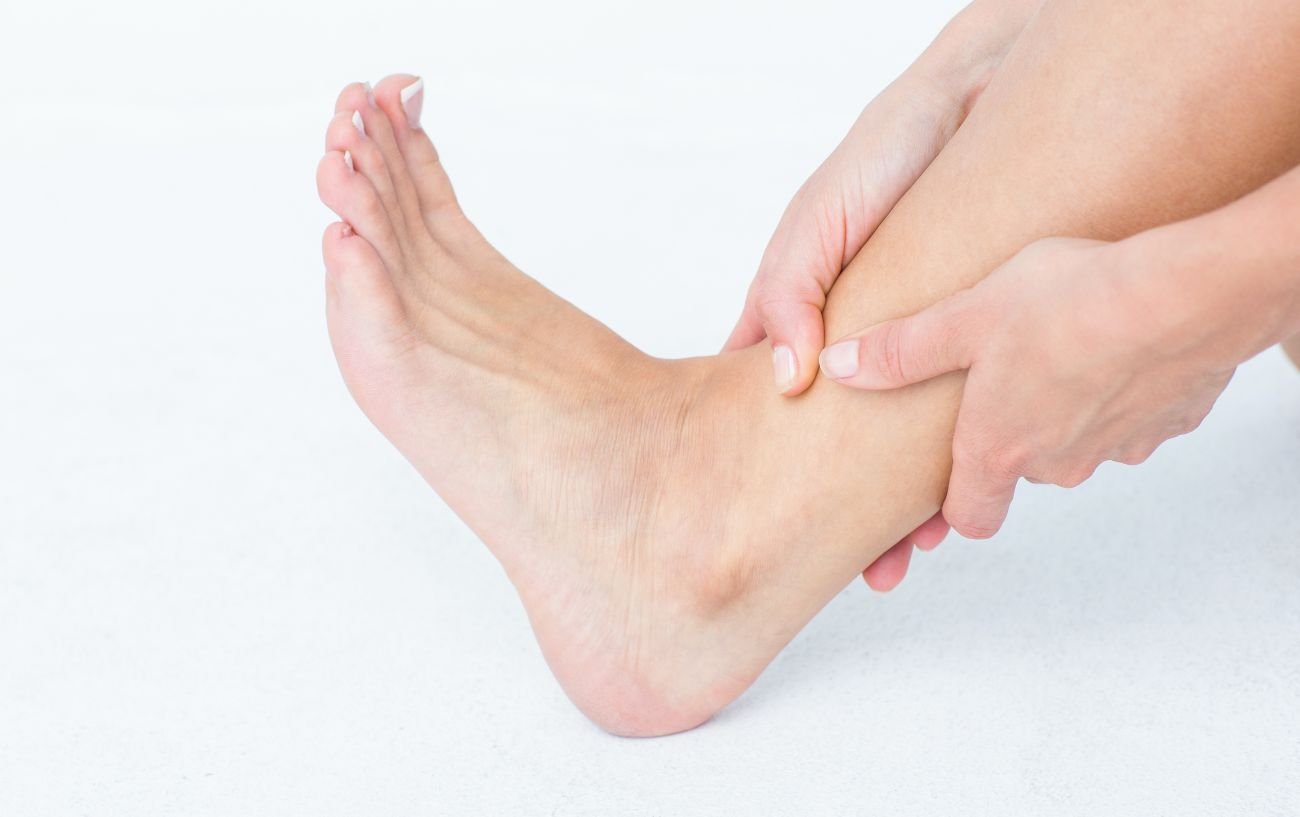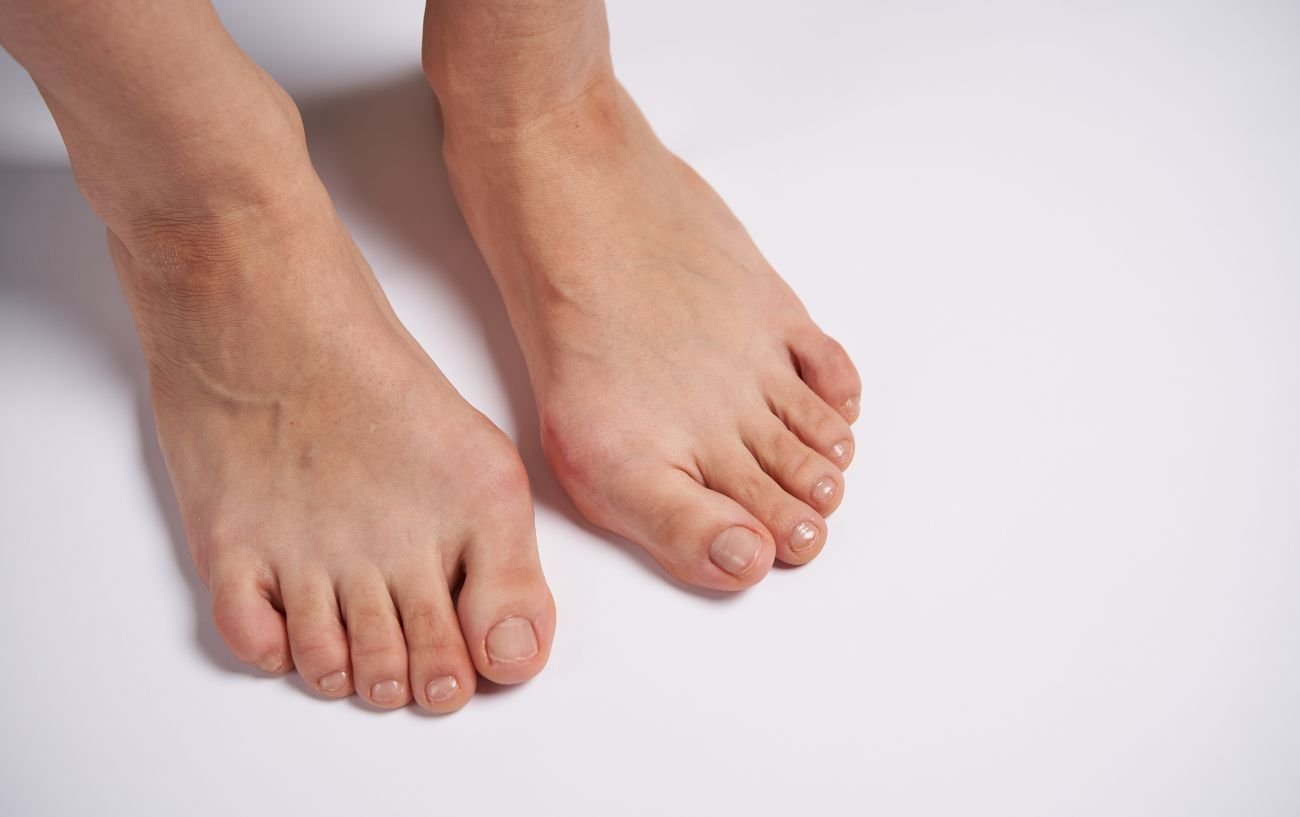Although we don’t have to put much thought into walking, it’s a fairly complicated process involving the coordinated interplay of quite a number of bones, joints, and muscles.
While we hear about proper joint alignment, we don’t often hear about proper foot positioning. In fact, most people take the alignment of their feet when they walk for granted—in most cases, our feet are oriented pretty straightforward.
However, there are two different foot postures—pigeon toes and duck feet—that are not all that uncommon.
Being pigeon-toed means your toes point inward towards one another, while having the duck feet posture is the opposite of pigeon-toed, wherein the feet point outwards.
Both foot posture abnormalities can affect your comfort, walking economy, joint and muscle function, and health. If you have the duck feet foot posture (out-toeing), it can make you feel self-conscious, yet many people are reluctant to bring it up and ask how to fix it.
The good news is that there are exercises to fix duck feet that you can do at home.
In this article, we will outline specific exercises that can potentially fix duck feet and improve your foot positioning.

What Are Duck Feet?
Duck feet refers to an abnormal foot posture wherein the feet point outwards away from one another like a duck.
Therefore, when you stand and look down at your feet, your toes will flare away from the midline as if making the letter “V.”
How Can I Tell If I Have Duck Feet?
Here are a few at-home tests you can do to determine if you have duck feet:
Marches
March in place for 10 seconds. Keep your eyes straight ahead. At the end of the time, look down at your feet and observe their position.
Walk the Line
Find a line on the floor, such as a line between two wooden boards, a line of bricks on a sidewalk, a painted line on a playground, or a line between tiles.
Walk forward, straddling the line underneath your inseam centered between your two feet. Keep your eyes forward and walk naturally for five paces.
Stop and look down at the positioning of your feet.

Video
Ask a friend or family member to take a video of you walking, focusing on your feet.
Observe your foot positioning as you review the video.
Regardless of the method you use, at the end of all of these tests, when you look at the positioning of your feet, notice whether your toes are pointing straight ahead, inwards, or outwards.
If your feet flare outward towards either side, you are duck-footed.
Note that a small degree of outward foot posturing is normal, typically around 5 to 10° or less; anything beyond that would be diagnostic of duck feet.

What Causes Duck Feet Posture?
Although many people assume that if you are duck-footed, you have some sort of abnormality that stems from the foot or ankle itself, duck-foot foot posture can actually stem from alignment abnormalities further up the kinetic chain as well.1Rerucha, C. M., Dickison, C., & Baird, D. C. (2017). Lower Extremity Abnormalities in Children. American Family Physician, 96(4), 226–233. https://www.aafp.org/pubs/afp/issues/2017/0815/p226.html
In other words, duck feet may be caused by issues throughout the lower body, with just the big toe, the entire foot, the ankle, the knee, the hip, or even the pelvis.
To maximize the effectiveness of your duck feet exercise program, it’s important to determine where along the kinetic chain your duck-footed posture stems from.
Furthermore, the more precise you can get in identifying the particular cause, whether it be an anatomical or structural deviation or a muscle imbalance at that joint or location, the more precise you can be in selecting the best duck feet exercises you should do.
Here are the common causes of duck feet:

#1: Posterior Pelvic Tilt
A posterior pelvic tilt refers to a pelvis that is oriented in a way that tips backward with the front of the pelvis higher than the back (like your tail is tucked).
You can determine if you have a posterior pelvic tilt by locating the pointy parts on the front of your pelvis at the hips, called the Anterior Superior Iliac Spine (ASIS), and the pointy parts in the center of the back of your pelvis, called the Posterior Superior Iliac Spine (PSIS).
You have a posterior pelvic tilt if the ASIS is higher than the PSIS.
A posterior pelvic tilt can lead to duck feet because it points the hip joints outwards. This, in turn, can cause the lower legs, knees, shins, and feet to turn outward.
When you have a posterior pelvic tilt, the hamstrings and glutes tend to be tight, while the hip flexors and erector spinae along the spine may be weak.

#2: Hip External Rotation
Hip external rotation refers to an outward turning of the lower limbs (legs) relative to the hip joint.
Your thighs (femurs) will not appear centered, but the very middle of your thighs will be pointed somewhat towards the outside of your body, and your knees will be pointed outward rather than straight ahead.
This, in turn, causes the shins and feet to point outwards, causing the duck feet posture.
When you have hip external rotation, your external rotators (hip muscles), such as your gluteus maximus, piriformis, posterior portion of the gluteus medius, and the obturators and gemellus muscle groups, are overly tight.
The internal rotators of the hips, such as the adductor magnus, tensor fasciae latae, pectineus, and anterior gluteus medius are weak.
Other than weak or tight hips, there can also be structural abnormalities of the hip,2Nourai, M. H., Fadaei, B., & Rizi, A. M. (2015). In-toeing and out-toeing gait conservative treatment; hip anteversion and retroversion: 10-year follow-up. Journal of Research in Medical Sciences: The Official Journal of Isfahan University of Medical Sciences, 20(11), 1084–1087. https://doi.org/10.4103/1735-1995.172833 such as femoral retroversion, which can lead to duck feet.
Unfortunately, there won’t be many things you can do in terms of physical therapy to correct this issue.

#3: Tibial External Rotation At the Knee
Tibial external rotation occurs when the shin bone is twisted outward (sometimes called tibial torsion) relative to the knee cap.
This can then cause the feet to assume the duck-footed posture.
With this deviation, the lateral hamstrings and calves may be tight, and the medial hamstrings, calves, and popliteus might be weak.
However, this is also a structural abnormality, so if tibial torsion is the only cause of your feet turning outward, you might be unable to fix duck feet posturing.
#4: Limited Ankle Mobility
When we walk, the ankle dorsiflexes, which means that the toes point upwards towards the sky or the shin, to help clear the foot off the ground as you take a step so you don’t trip.
If you have limited ankle dorsiflexion, your brain unconsciously compensates by externally rotating your feet or pointing them outward into the duck-footed posture to help clear your foot over the ground.
You can assess the range of motion of your ankle by sitting in a chair with your knees bent and feet flat on the floor. Using the muscles in your tibia (shins), lift your toes up as high as you can while keeping your heels planted lightly on the ground.
If you are unable to get an inch or a thumb’s width of space between your toes and the ground after you have lifted them up, you have limited ankle dorsiflexion.
This can be caused by having tight calves or weak shin muscles (tibialis anterior).

#5: Overpronation Of the Feet
If your feet overpronate, the arch on the medial side of the foot will collapse, and your feet will roll inwards.
Overpronation is usually caused by flat feet, but it can also be exacerbated by tight peroneal muscles and weak muscles in the shins and feet.
#6: Hallux Rigidus
Lastly, if you have a stiff big toe, termed hallux rigidus, or limited extension in your big toe, you can have outward-pointing feet.
As with limitations in ankle dorsiflexion, if your big toe cannot point upwards enough when you walk, your body compensates to help you clear the ground by turning your feet outward.
Hallux rigidus is typically caused by arthritis in the MTP joint, but it can be exacerbated by having a tight flexor hallucis longus muscle.
Let’s get to our tips on how to fix duck feet:

How To Fix Duck Feet
What Are The Best Exercises To Fix Duck Feet?
The best exercises to fix duck feet mobilize tight tissues and correct imbalances.
You should stretch the muscles that are cited as being tight and strengthen those that are weak. For example, with posterior pelvic tilt, you would do the following:
- Hamstring stretching: Standing or seated hamstring stretches (reaching for the toes).
- Hamstring mobility: Foam rolling the hamstrings to release tight muscles.
- Anterior pelvic tilts: Standing upright with your hands on your hips, tilt your pelvis forward and hold for 3-5 seconds. Complete 10-15 reps.
To prevent being redundant, we will skip explaining the stretches and mobility exercises and list the strengthening exercises.
- Hip and tibial external rotation: Perform tibial or hip internal rotation (turn the leg inwards).
- Ankle dorsiflexion: Heel walks, resisted foot raises.
- Overall exercises that can help: Step-ups and step-downs, lunges, and side leg lifts with your toes pointing downward.
In many cases, more than one issue is simultaneously present and contributing to your poor posture.
In order to fix duck feet, you must address all of the various causes that are affecting you.
Perform the duck feet exercises daily for 5-10 minutes, and you should start noticing a gradual resolution.
If your condition persists, you may want to seek help from a physical therapist, especially if you are experiencing lower back pain, knee pain, bunions, or any other type of discomfort that may be caused by duck feet.
To stretch out your calves and help you improve duck feet, check out this next guide:












